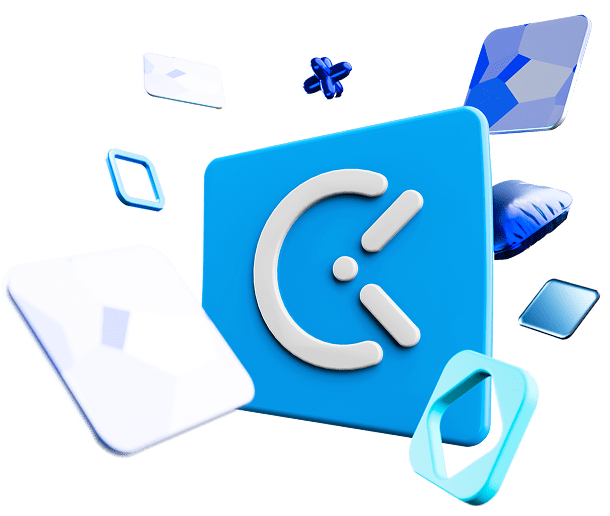Here is what you need to know about switching from Harvest to Clockify, and what the major differences are.
Why move from Harvest to Clockify?
While both Harvest and Clockify give you a way to track your time and expenses, run reports, and invoice clients, they offer a distinct set of features to help you with it.
One of the most obvious differences between the two is that Clockify offers more features and more pricing options that are suitable for different team sizes.
In its free plan, Clockify offers unlimited projects, clients, users, and reports, while Harvest’s free plan offers only time-tracking for 2 projects.
Also, in Clockify, you can track time in multiple ways, through a timer, timesheet, kiosk, and auto tracker. Whichever method you use, all your data will be synced.
Now, let’s see how to actually move from Harvest to Clockify.
How to move from Harvest to Clockify?
Considering that you want to keep your time-tracking data from Harvest and continue tracking time in Clockify, you first need to export your time-tracking data in a CSV file.
Step 1: Export data from Harvest
Harvest gives you an option to export your time-tracking data from the Reports page.
Once you’re logged in to Harvest, go to the Reports section and select the desired time range for which you want to export data.
You can export data right from the first Time tab where you see your summarized information per client, project, task, or team member.

But, if you want to export certain information only, go to the Detailed time tab, and customize what you want to export, from date range to clients, projects, tasks, and team.
Once you filter out the data and run the report, you will be able to export it as CSV.
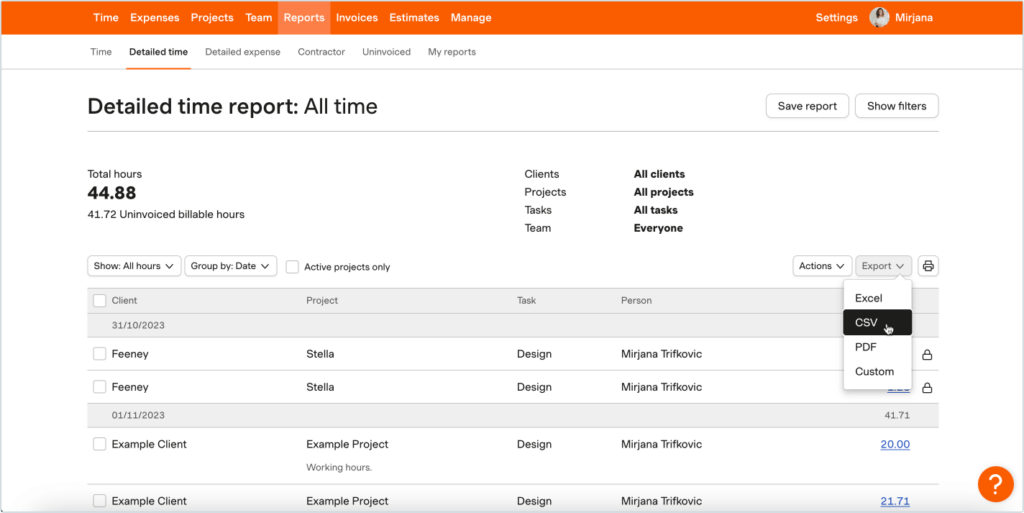
Step 2: Import files to Clockify
You can import your data from Harvest to Clockify in just a few minutes.
Go to the Clockify web app, click Settings in the sidebar, and go to the Import tab.
There you will have an option to “Upload CSV file”, where you can select the file you’ve exported from Harvest.

Once it’s done, you will receive a notification that the import was successful and you can check your newly imported time entries and projects in Clockify’s Detailed report.
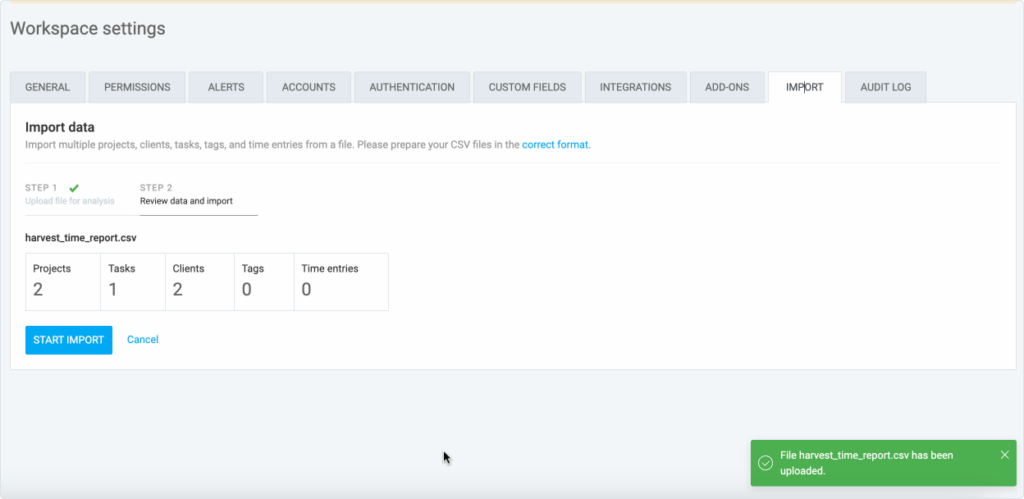
Important: You will not be able to import time entries if you do not have a paid subscription or are in trial mode.
Data formatting rules for successful import
For an import to be successfully completed, the first thing to pay attention to is that all required fields are included in the file.
Important: the required fields for a file to be imported are Email (of a user), Start date (of a time entry), Start time (of a time entry), and Duration (of a time entry).
If you try to import an incomplete file with missing required fields, Clockify will warn you about it.

Important: Only time entries for existing users in your Clockify account will be imported, so make sure you add your team and your users’ email addresses are listed correctly in the file.
Also, your exported Harvest file will have slightly different names for different categories in Clockify.
Summary: The Notes field in Harvest will be the Description field in Clockify, the Date field is the Start Date in Clockify, and the Hours field is the Duration field in Clockify.
So, in case you try to import the CSV file right away, Clockify will warn you about the occurring errors.
For example: If a column in your file is named “Programme” instead of “Project”, Clockify will not be able to import the file until your rename it.
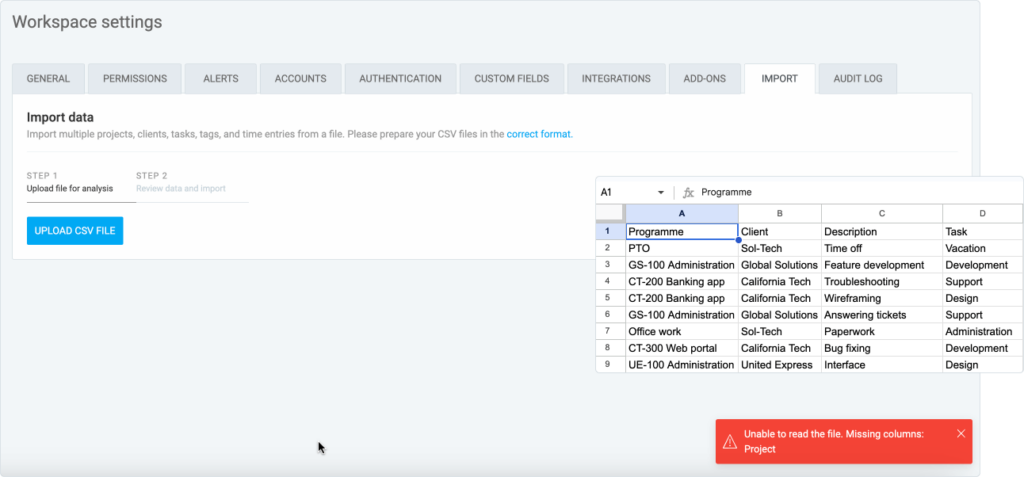
If you want to group your time-tracking data in “Programmes“ or another category, you can set that up in Clockify’s settings where you can customize your time grouping categories.
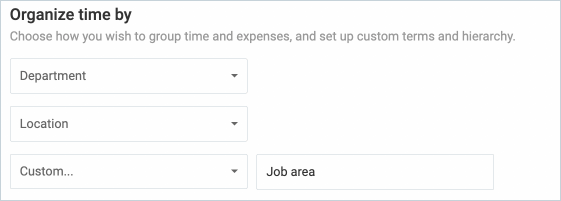
Besides naming the required categories correctly, all data needs to be in the right format (e.g., date formats need to match).
To make sure your data is named or formatted correctly, it’s best if you edit it in an Excel, or any text editor.
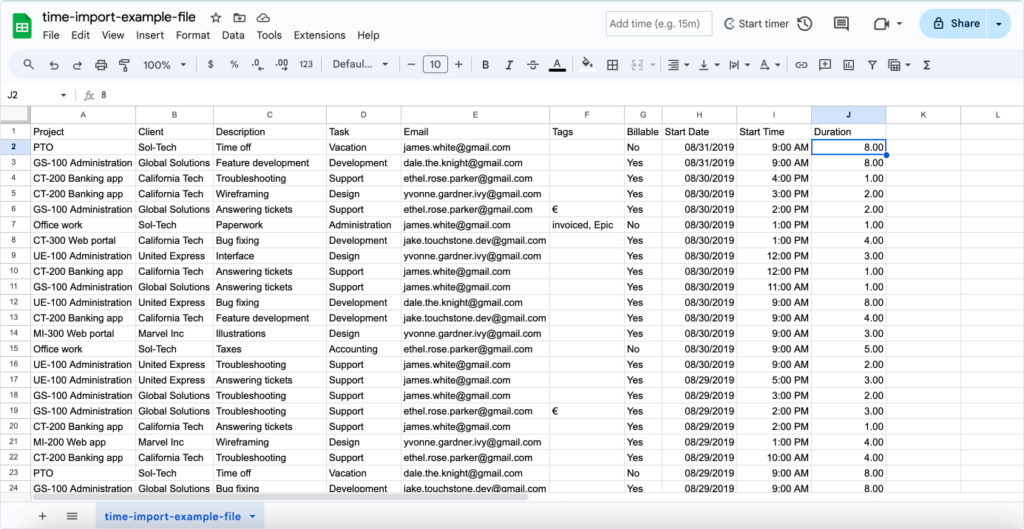
Initially, you will probably encounter differences in the date format and entry duration format.
Date formats in the document and in your Clockify Profile settings should be the same.
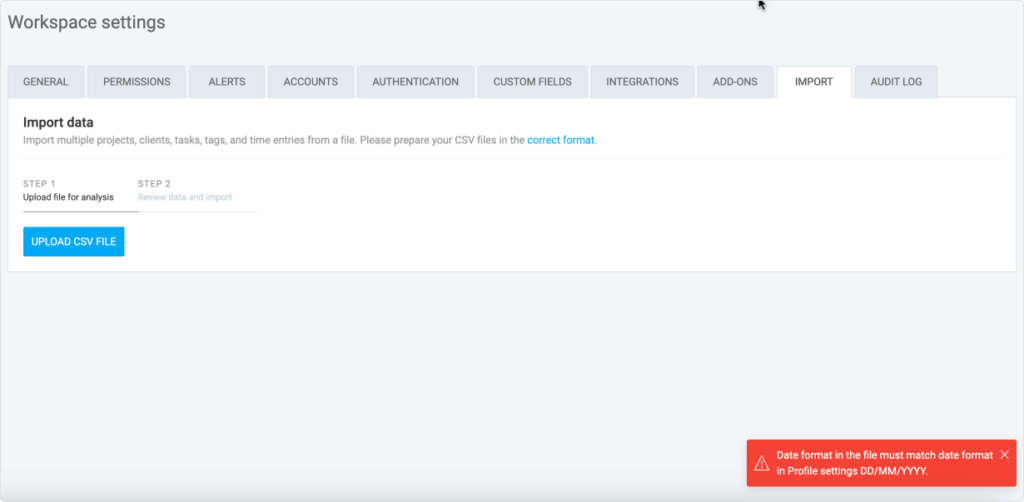
And, the time entry duration format in the file should match yours in the Workspace settings.
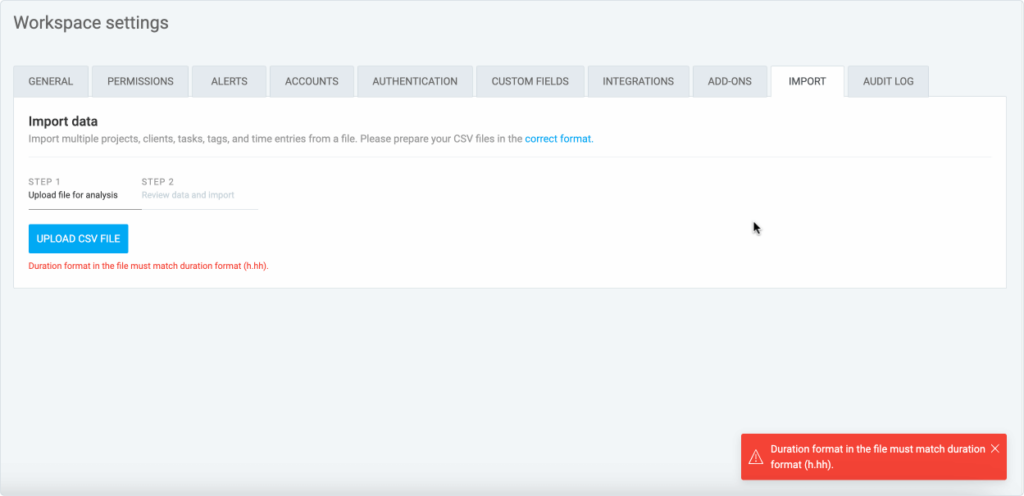
After you organize your information like that, your file will be ready for import.
If you wish to import only some of the information, you can manually delete the values in other columns and they won’t be imported.
In this case, Clockify will warn you that some entries are missing information, but you will still be able to import the rest.
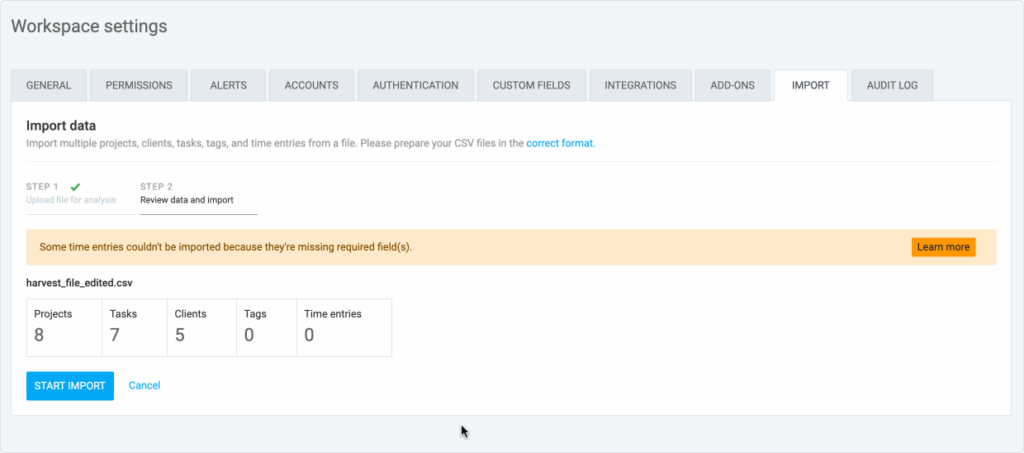
For edits in a text editor, categories you want to import should be separated by a comma, with their values in each row below, also separated by commas.

In case you don’t want to import some of the categories or their values, just type a comma instead of the actual text or value.
Summary of formatting rules
- Only Admins can do the import.
- If an item already exists, it will be skipped during the import. Only items that don’t already exist will be created.
- Tasks can’t be imported without its Project.
- The order of the columns is not important.
- Names are case sensitive.
- You can perform an import action for an unlimited number of times, but the file size is limited to 1MB.
- User’s email in Clockify and their email in the CSV file have to match.
- Required fields for time import: Email, Start date, Start time, Duration.
- Optional fields for time import: Billable, Description, Project, Task, Client, Tag (if some of these fields are marked as required in Clockify, they will be required in CSV too).
- If you don’t group projects by client, you should rename the client column in the CSV file accordingly.
- Duration in the CSV file should match the selected Duration format in workspace settings (hh:mm:ss or h:mm).
- Values in Start time and Start date columns in the CSV file should match your start and date formats from your profile settings.
- End date and end time are calculated automatically based on start time and duration.
- Projects will inherit initial private/public and billable/non-billable status based on New projects are by default workspace settings.
- If you don’t specify an entry’s billable status, it will be inherited from its project.
- Time entries are imported according to the time zone of the person who does the import.
- Hourly rates are inherited according to the hierarchy.
- Multiple tags can be imported by surrounding tags in double quotes and separating with a comma (e.g. “tag1, tag2, tag3”)
What else can you do in Clockify?
Now, your data is ready and organized, and you can proceed to explore other Clockify features to customize it to your needs.
If you have plenty of projects and team members, or just want to delegate some of the responsibilities to other team members, you can assign them the role of a manager.
Project managers can manage their projects and tasks, decide who will have access to the project, set project estimates, and create schedules.
Clockify has a built-in scheduling feature that can be done from project-view or team-view if you want to schedule team members based on their overall capacity.
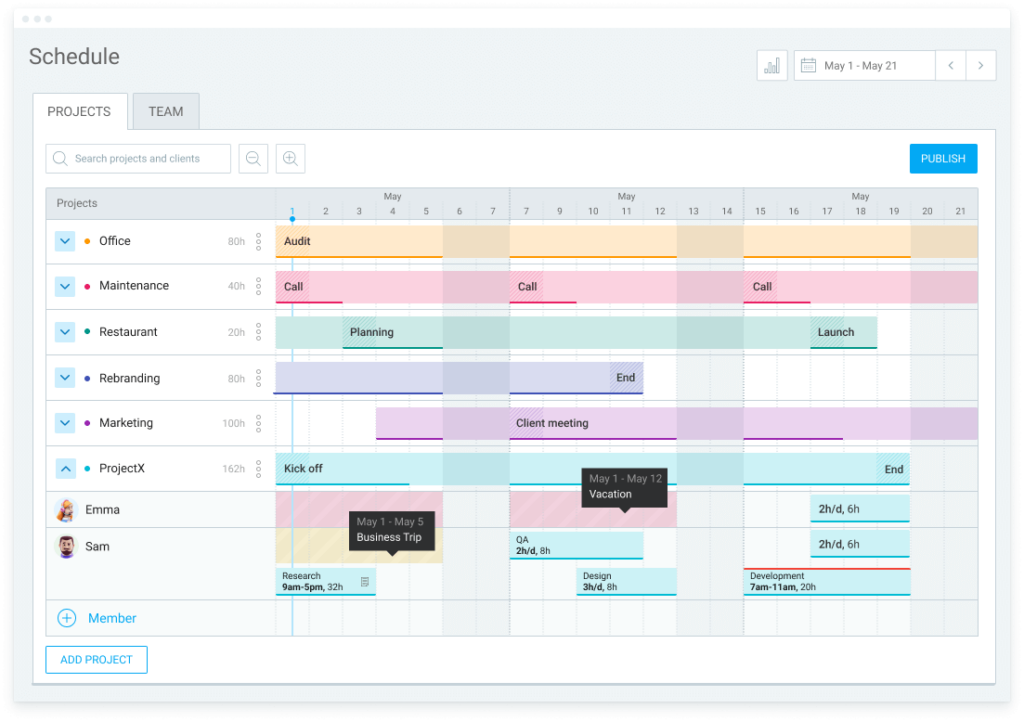
Team managers can manage their team’s time, manage approval of their timesheets and time off.
Time off in Clockify gives you a way to manage employees’ absence customized time off policies and holidays, so you can better allocate your resources.
When it comes to profitability tracking, Clockify allows you to monitor your costs and budgets, based on rates, budget estimates, and expenses.

Rates in Clockify can be set for workspace, project, tasks, team member, and project member.
This way you will have a more comprehensive view on how much labor cost or revenue is associated with each project, task, or team member.
Expenses are recorded the same way as in Harvest, as a part of a specific project, or kept as a log of your internal expenses.
You can also bill them together with billable hours, the same way you do in Harvest.
Invoices in Clockify can be customized from the appearance point of view, you can customize default values for invoices, and customize item types, and invoice item names.
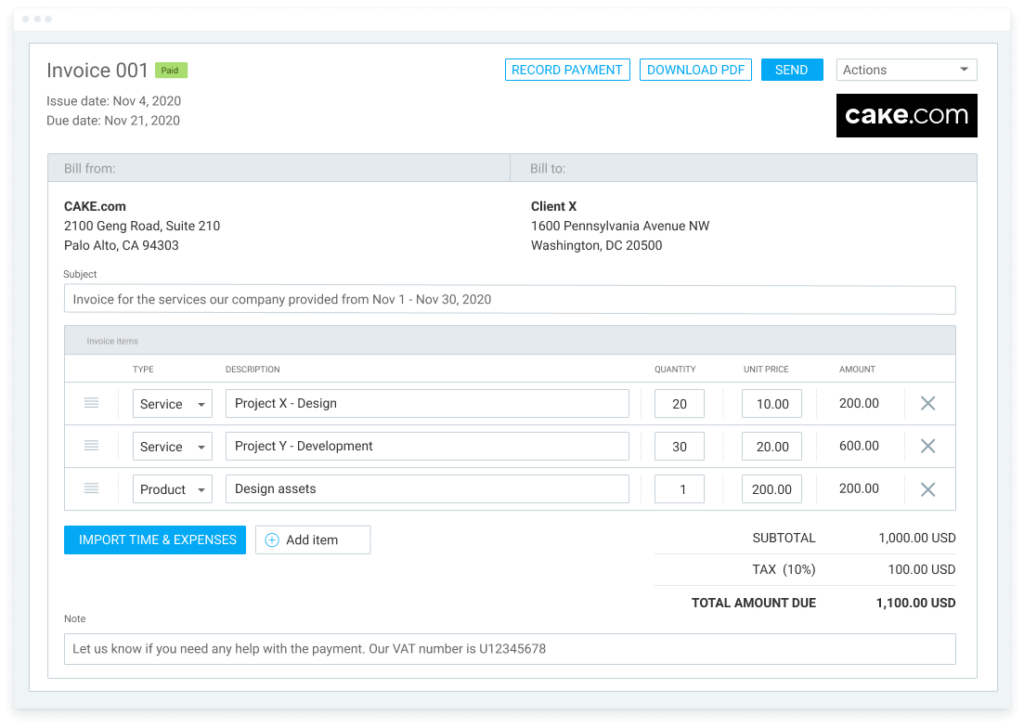
Your time can also be filtered in reports as invoiced or uninvoiced, so you know at each moment what was billed to avoid double-billing to clients.
Additionally, invoices in Clockify will have its status based on the payment and sent status, so you always know what has been billed, what is overdue, and what is partially paid.
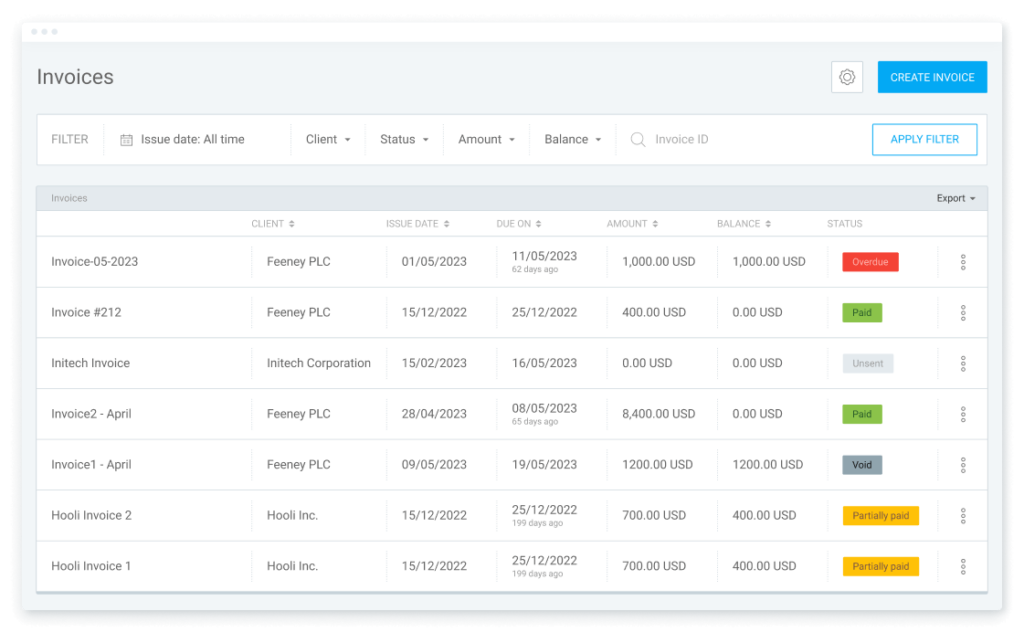
In case you need further details on time entries or team members, you can always create custom fields for users or custom fields for time logs.
Custom time entry fields will be visible in the Detailed report, so you have all the details you need at a glance.
Reports give you a way to filter out the information however you need, share them with others, and export.
And besides time reports, you can use Reports to monitor progress based on scheduled vs tracked time, track employee daily attendance, and have an overview of all the expenses.
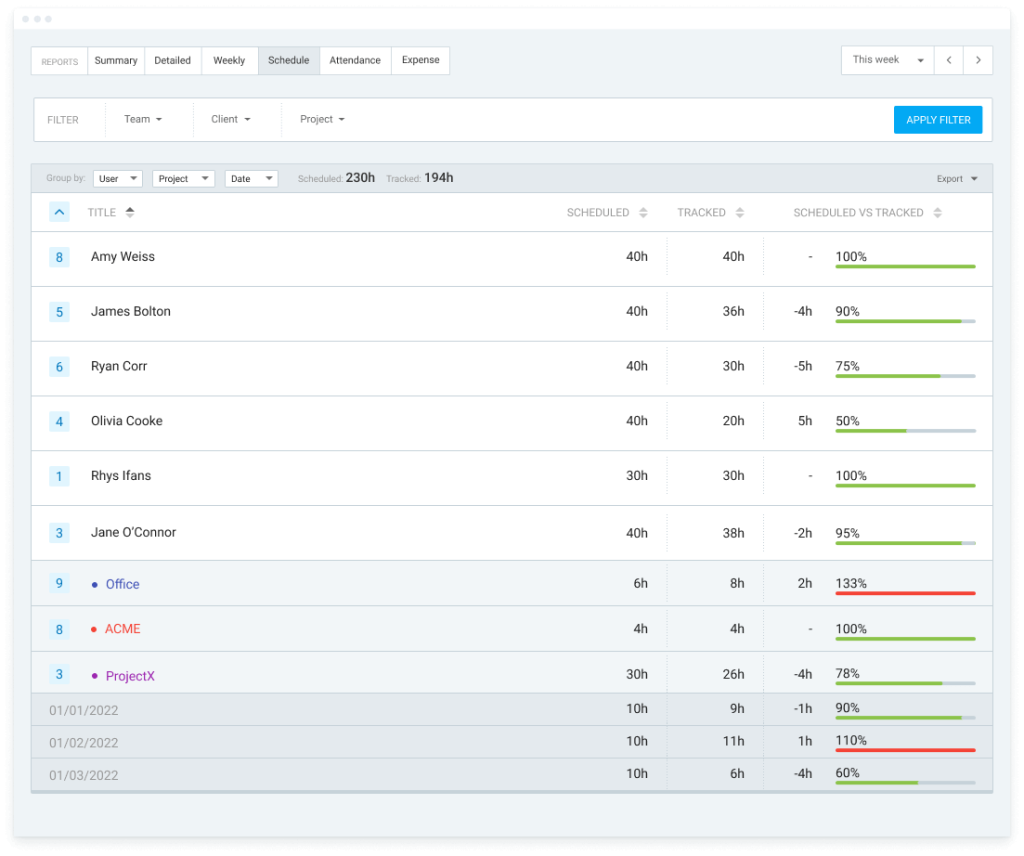
Conclusion: Choose the right tool for your team
Choosing the best tool for your business depends on the number of the projects you are working on, and the pace at which your team and business grow.
Both tools will work well if you have a small team working on up to two projects, on which you want to get an overview of how your time is spent.
But, if you need more flexibility with your time-tracking and have a larger team working on multiple different projects, Clockify is the right and more affordable solution.
Besides choosing between methods you use to track time in Clockify, you can also track time on different devices, and all your data will be synced.
If you would like to see how other time-tracking or other features in Clockify work, make sure to check out Clockify YouTube channel, or explore the website for more details.
How we reviewed this post: Our writers & editors monitor the posts and update them when new information becomes available, to keep them fresh and relevant.
